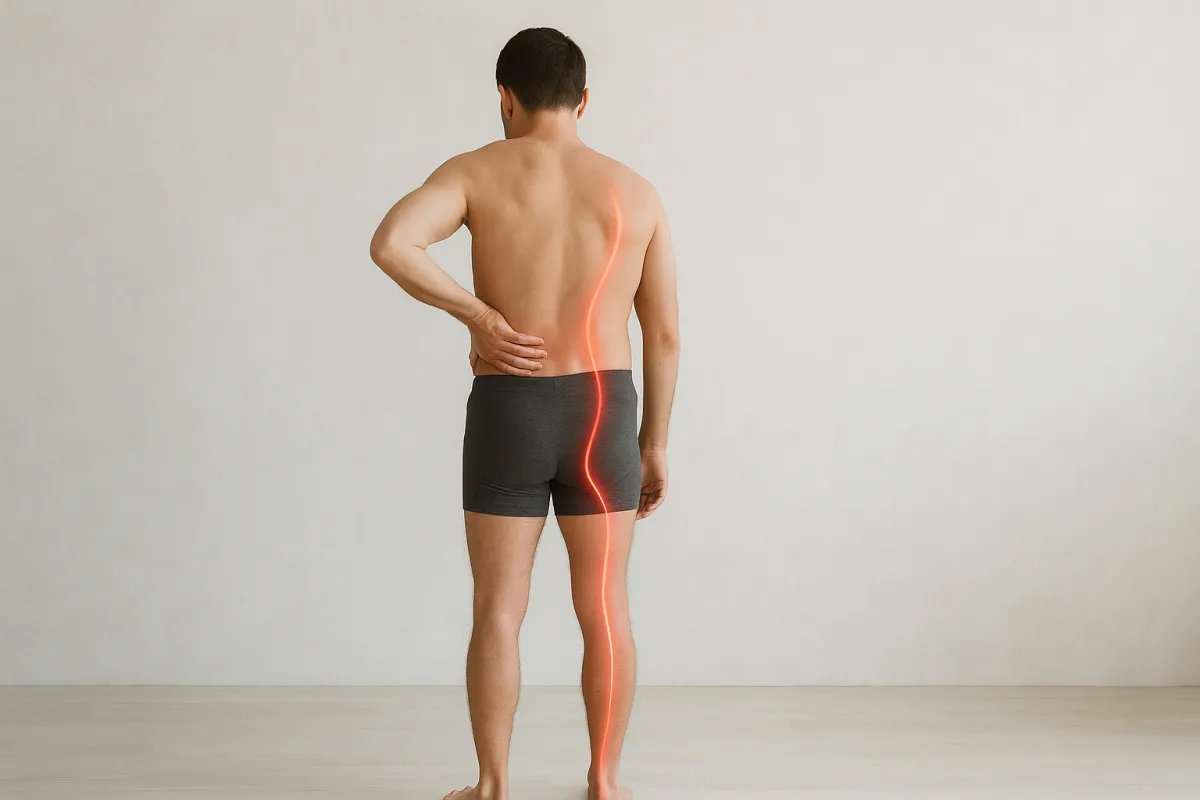
The Truth About Sciatica: This Nerve Problem Is Often Missed
If you've been told you have sciatica—but nothing seems to help—you're not alone.
I saw this countless times in my practice. Patients came in with burning, tingling, or numbness on the front and the outside of their thigh, often misdiagnosed and stuck in frustrating treatment cycles.
The pain was often labeled “sciatica” simply because it involved nerves and the leg. But in many cases?
👉 It wasn’t the sciatic nerve at all.
The real culprit was something few people—and far too few doctors—talk about:
Lateral femoral cutaneous nerve entrapment.
Let’s unpack what that means—and how to find real relief.
Wait… There’s Another Nerve?
Yes. While the sciatic nerve runs down the back of your leg, there’s another important nerve in your pelvis: the lateral femoral cutaneous nerve (LFCN for short). It travels just in front of your pelvic bone and across the front and side of your thigh.
If this nerve gets pinched, stretched, or compressed, it can cause symptoms that mimic sciatica—but in a slightly different location.
Lateral Femoral Cutaneous Neuropathy: The Hidden Imitator
This condition is called meralgia paresthetica, and here’s what it usually feels like:
Burning, tingling, or numbness in the outer thigh
Pain that gets worse with standing, walking, or tight clothing
Symptoms that don’t improve with traditional sciatica treatments
Normal findings on back imaging (MRIs or CT scans)
It’s caused by compression or irritation of the lateral femoral cutaneous nerve—usually where it passes through a ligament that joins your pelvic bone to your pubic bone.
And one of the biggest underlying causes?
👉 Pelvic misalignment.
How Pelvic Misalignment Triggers Nerve Pain
When your sacroiliac (SI) joint is out of position, if you injure it, sit for long hours, or carry weight unevenly, it changes the tension and space around nearby nerves. The LFCN, which is very sensitive, can become pinched or stretched.
I saw this over and over again:
Fix the pelvis, support the area… and the “sciatica” disappears.
The Problem With the Sciatica Diagnosis
Sciatica refers to pain that radiates along the sciatic nerve—which travels down the back of the leg, into the calf or foot. True sciatica is often caused by a disc issue or spinal impingement.
But when the pain is more to the side or front of the thigh, and scans show nothing wrong with your spine, it’s time to look elsewhere.
This is where most diagnoses fall short. And why patients suffer for months—or years—without answers.
How I Help Patients With “Sciatica” That Isn’t Sciatica
🔹 Step 1: Realign the Pelvis
I teach a gentle stretch that can reposition the pelvic bones and relieve pressure on both the SI joints and surrounding nerves—including the LFCN. Most people feel a difference almost immediately.
🔹 Step 2: Wear a Pelvic Support Belt
A Pelvic Support Belt, worn low on the hips, gives external support to the SI joints. This prevents the bones from slipping out of place again and reduces tension on the lateral femoral cutaneous nerve.
🔹 Step 3: Heal the Ligaments
If the ligaments around your pelvis have been overstretched, they may not be holding the bones in place properly. That’s where prolotherapy comes in—a regenerative treatment that strengthens ligaments and promotes long-term healing.
What About Pain Relief Right Now?
To reduce burning or nerve irritation during the healing process, I often recommend QR Cream—a topical treatment I developed for my own patients. It contains mannitol, a natural sugar compound that calms irritated nerves just under the skin.
For outer thigh pain, apply it along the side of your thigh where the symptoms are worst. The closer the irritated nerve is to the surface, the better it works.
Why This Works When Other Treatments Fail
Conventional sciatica treatments often focus on the spine—and when they don’t work, patients are left feeling helpless or disbelieved.
But if your pain is actually coming from the pelvis and nearby nerve structures, treating the spine won’t help.
By correcting pelvic misalignment, supporting the SI joints, and relieving nerve pressure, you can finally get relief—even when everything else has failed.
Let’s Recap:
✅ Not all leg nerve pain is sciatica
✅ Pain on the outer thigh may be lateral femoral cutaneous nerve entrapment
✅ The root cause is often a misaligned pelvis
✅ Realignment, support, and regenerative care offer real results
✅ Topical relief like QR Cream can calm irritated nerves while you heal
Want to Learn More Ways to Find Lasting Relief?
🎥 Register for my free webinar: Live Without Pain
I’ll share ways to support your body’s natural healing—without drugs or surgery.
To find out how to realign the pelvic joints, join the course or read my book: “Low Back Pain: 3 Steps to Relief in 2 Minutes.”
Wishing you insight, relief, and freedom from misdiagnosis,
— Hélène Bertrand, MD (retired)
CLICK HERE TO RECEIVE LOW BACK PAIN RELIEF in 2 MINUTES!
Disclaimer: This content is for informational and educational purposes only and does not substitute professional medical advice, diagnosis, or treatment. Always consult your healthcare provider before starting any new treatment or making changes to your health regimen. Although Dr. Bertrand is a retired medical doctor, she is not practicing medicine or providing medical care through this website.
